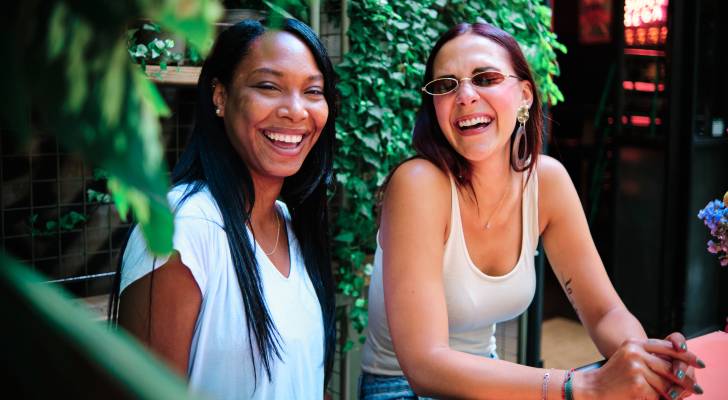
To her million-plus followers, Miranda McKeon isn’t just living in the West Village — she’s selling the dream. At 23, her mix of polished fashion posts and raw honesty about her breast cancer journey has built a brand that feels both aspirational and relatable, with her West Side Village lifestyle front and center.
Long before she touched down in New York, McKeon knew exactly where she wanted to live. A student at the University of Southern California, she spent her final semester glued to StreetEasy, scrolling through listings and plotting her perfect postgrad landing.
Don’t miss
- I’m 49 years old and have nothing saved for retirement — what should I do? Don’t panic. Here are 5 of the easiest ways you can catch up (and fast)
- You’re probably already overpaying for this 1 ‘must-have’ expense — and thanks to Trump’s tariffs, your monthly bill could soar even higher. Here’s how 2 minutes can protect your wallet right now
- Gain potential quarterly income through this $1B private real estate fund — even if you’re not a millionaire. Here’s how to get started with as little as $10
But while the West Village has become a magnet for young adults chasing that fantasy, they aren’t the ones driving up the rents. The neighborhood’s luxury glow-up has been decades in the making — fueled by deep-pocketed buyers and commercial overhauls.
Fantasies, after all, come with price tags — and, in this case, the occasional rodent roommate. The average one-bedroom in the West Village now rents for $6,182 a month, according to Zumper. For many recent grads, that’s a hard no.
Even for those who can afford it, like McKeon, there’s a hidden cost to chasing the perfect zip code — and it’s not just the rent.
A neighborhood built on fantasy and fortune
It’s tempting to blame the West Village’s high prices on TikTokers and Instagram stars, but the truth is, this Manhattan hotspot has always drawn people in. Savannah Engel, a fashion publicist who moved to the neighborhood in 2009, remembers when the West Village still had a bohemian edge. “I’d wake up on a Tuesday and there’d be 10 people passed out in my apartment,” she told The Cut. Back then, her rent was $900 a month — a price that now feels mythical.
But the vibe began to shift by the mid-2000s. Bleecker Street turned into a luxury shopping corridor, and soon after, wealthy buyers followed. Rupert Murdoch purchased a 25-foot-wide townhouse for $25 million in 2015. A year later, Sarah Jessica Parker and Matthew Broderick bought two adjacent townhouses for a combined $34.5 million. The New York Post even dubbed a section near West 11th Street “the real Billionaires’ Row.”
By 2017, the tables had turned. Small businesses were forced out as commercial rents soared, leaving once-buzzing storefronts empty. “The landlords started jacking up the prices,” said designer Cynthia Rowley, who bought her building back in 2004. “That’s when everybody left.” So yes, influencers may be the latest faces of West Village gentrification — but the neighborhood’s transformation has been decades in the making.
Read more: Want an extra $1,300,000 when you retire? Dave Ramsey says this 7-step plan ‘works every single time’ to kill debt, get rich in America — and that ‘anyone’ can do it
Real Estate glow-up
The West Village might look picture-perfect on Instagram, but renters say the experience isn’t always so glamorous.
Polly (HuiWen) Milligan, a real estate agent at Douglas Elliman who’s called the neighborhood home for over eight years, says affordable finds are nearly extinct thanks to rent control laws and the high demand. “The price never drops,” Milligan told Street Easy. “Not even during the lockdown. The price never went down.”
Even at premium price points, quality can fall short. McKeon, who was wowed by her apartment’s bright, spacious layout online, soon discovered the fine print that didn’t make the listing: cockroaches, leaks and strange brown liquid dripping out of a brick wall onto her roommate’s comforter. Yet despite it all, McKeon’s planning to re-sign.
How to get the vibe
We all know the siren call of a trendy neighborhood — the cobblestones and the indie cafés. But before you get swept up in the fantasy, ask yourself: are you chasing the lifestyle, or just the moment?
Often, living just a few blocks outside the hottest zip code can cut your rent by hundreds, sometimes thousands a month — while still giving you easy access to the same brunch spots and boutique gyms. Expanding your search radius is one of the oldest tricks in the book, and it still works.
If you’re set on living right in the thick of things, think strategically. Roommates can be a game changer, cutting costs and even providing built-in company. And while rare, rent-controlled or stabilized units are out there — locking one down can help stabilize your finances over time.
Above all, keep your budget front and center. It’s easy to get swept up in the allure of a dream neighborhood, but nothing sours the experience faster than constant money stress. The ultimate dream is living somewhere that fits both your lifestyle and your bank account.
What to read next
- Don’t have the cash to pay Uncle Sam in 2025? You may already be eligible for a ‘streamlined’ handshake with the IRS — here’s how it works and how it can potentially save you thousands
- Robert Kiyosaki warns of a ‘Greater Depression’ coming to the US — with millions of Americans going poor. But he says these 2 ‘easy-money’ assets will bring in ‘great wealth’. How to get in now
- Here are 5 ‘must have’ items that Americans (almost) always overpay for — and very quickly regret. How many are hurting you?
This article provides information only and should not be construed as advice. It is provided without warranty of any kind.